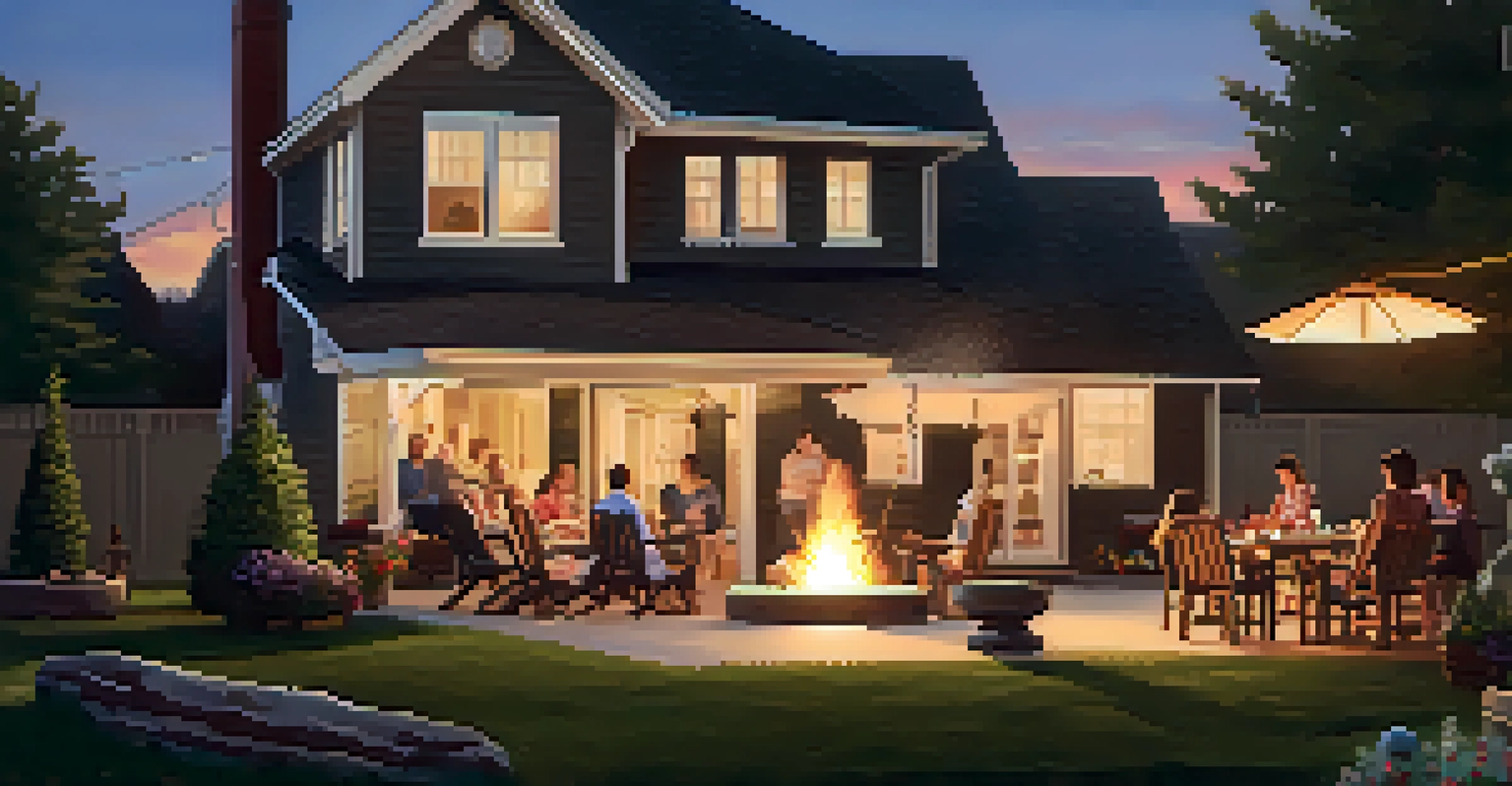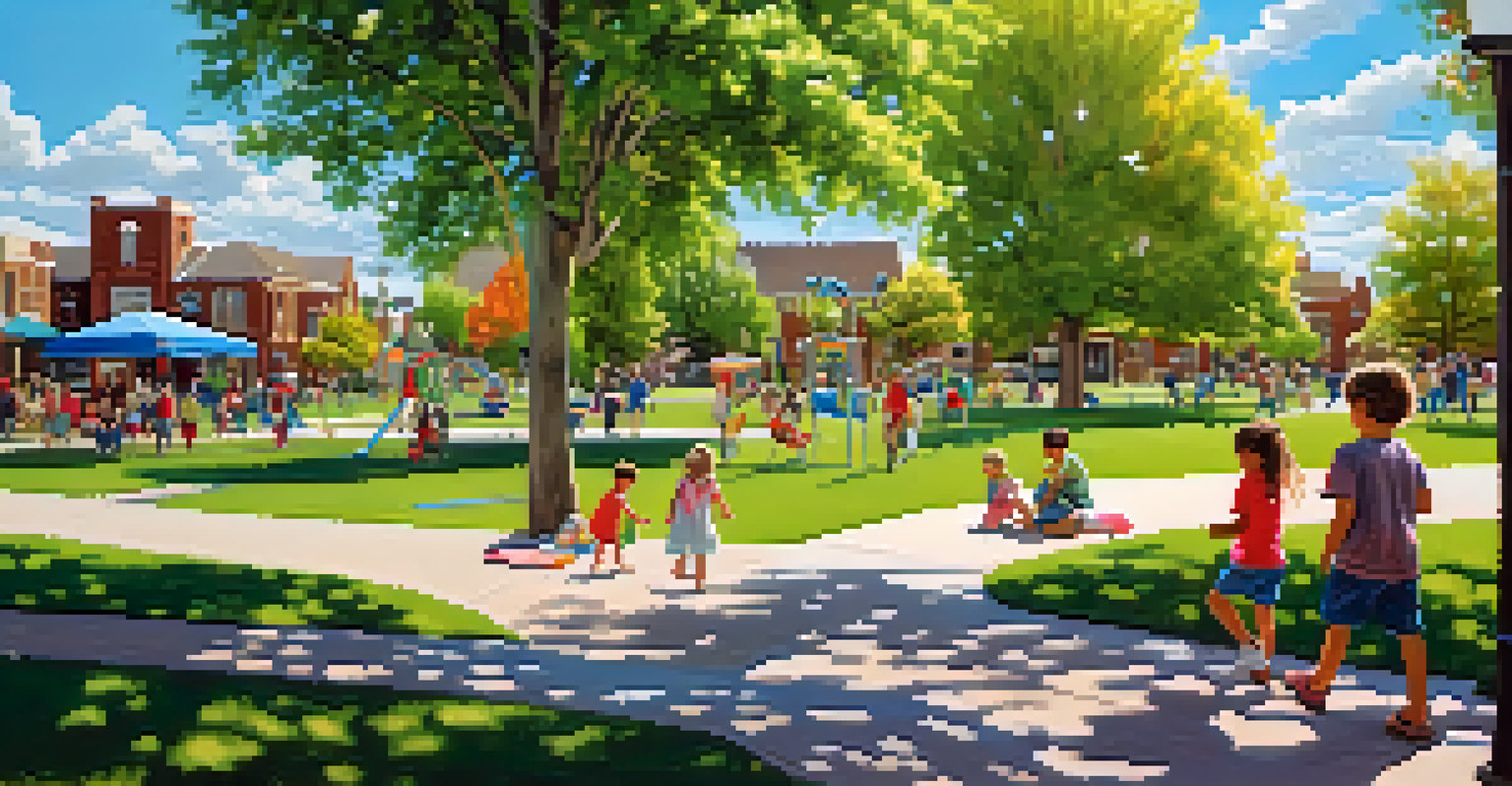Denver Housing Market: The Rise of Suburban Living Trends

Understanding the Shift to Suburban Living in Denver
In recent years, Denver has witnessed a significant shift in housing preferences, with more people opting for suburban living. This trend is largely driven by the desire for larger homes, outdoor spaces, and a quieter lifestyle away from the hustle and bustle of urban centers. Families, in particular, are seeking environments that offer both safety and community.
The suburbs are a great place for families to grow. They offer safety, space, and community, which are essential for a nurturing environment.
The pandemic accelerated this trend as remote work became more prevalent, allowing individuals to live farther from their workplaces. Suburbs are now seen as an attractive option, providing a balance of convenience and comfort. With many people re-evaluating their priorities, suburban areas have gained newfound popularity.
As the demand for suburban living continues to grow, the Denver housing market is experiencing changes in pricing and availability. Many buyers are looking for homes that offer modern amenities and access to nature, reshaping what it means to live in and around Denver.
Key Factors Driving the Rise of Suburban Living
Several factors contribute to the increasing appeal of suburban living in Denver. One major aspect is the affordability of homes in suburban areas compared to the urban core. With rising prices in the city, many buyers are finding better value outside of Denver, where they can purchase more spacious properties.

Additionally, the desire for a family-friendly environment plays a crucial role. Suburbs often feature highly-rated schools, parks, and recreational spaces that cater to families. This focus on community amenities makes suburban areas particularly attractive for those with children or planning to start a family.
Rise of Suburban Living in Denver
More people are choosing suburban areas for larger homes and a quieter lifestyle, especially post-pandemic.
Lastly, the flexibility of remote work has opened up new possibilities for living arrangements. As more companies adopt hybrid or fully remote models, individuals are no longer tied to commuting distances, allowing them to explore various suburban options without sacrificing their careers.
The Impact of Remote Work on Housing Choices
The shift to remote work has fundamentally altered how people view housing. No longer constrained by daily commutes, many professionals are prioritizing space and comfort in their living environments. This change has led to a surge in demand for homes with dedicated office spaces or multi-functional rooms.
Remote work has changed the way we think about where we live. People are prioritizing comfort and space over commuting time.
As a result, listings in suburban areas that boast larger square footage and outdoor spaces are becoming highly sought after. Buyers are increasingly willing to trade off shorter commutes for more desirable living conditions. This trend reflects a broader reevaluation of work-life balance, where home environments play a crucial role.
Moreover, the desire for a supportive neighborhood has also taken center stage. Many buyers are now looking for communities that foster social connections and provide recreational opportunities, making suburban living a more attractive option for modern lifestyles.
Emerging Suburban Neighborhoods Worth Considering
As Denver's suburban appeal grows, several neighborhoods are emerging as hot spots for homebuyers. Areas like Highlands Ranch and Parker are gaining attention for their family-oriented atmospheres, excellent schools, and abundant outdoor activities. These neighborhoods offer a blend of suburban charm with easy access to Denver's amenities.
Another notable area is Castle Rock, known for its picturesque landscapes and vibrant community events. With new developments and a strong sense of community, Castle Rock has attracted many families looking for a suburban lifestyle without sacrificing access to the city.
Influence of Remote Work on Housing
The shift to remote work has increased demand for homes with dedicated office spaces in suburban neighborhoods.
Lastly, Brighton is quickly becoming a favorite for its affordability and community spirit. Its proximity to both Denver and Boulder makes it an ideal location for those seeking a balance between suburban comfort and urban convenience.
The Role of Real Estate Agents in Suburban Markets
Navigating the suburban housing market can be complex, making the role of real estate agents crucial. Agents who specialize in suburban areas possess valuable insights into local trends, pricing, and neighborhood dynamics. They can help buyers identify the best locations that fit their needs and budget.
Moreover, experienced agents can provide guidance on the nuances of suburban living, such as school districts, community resources, and amenities. With the competitive nature of the current market, having a knowledgeable agent can make all the difference in securing the right property.
Additionally, agents often have access to off-market listings, giving buyers a competitive edge. By leveraging their expertise, buyers can navigate the complexities of the market with confidence and find their ideal suburban home.
Challenges in the Suburban Housing Market
While suburban living offers numerous advantages, it also comes with its own set of challenges. One of the most significant issues is the limited inventory of available homes. As more buyers flock to suburban areas, competition for properties has intensified, leading to bidding wars and rising prices.
Another challenge is the potential for longer commutes for those who still work in the city. While remote work has become more common, not everyone has the luxury of working from home. Balancing the desire for suburban living with the realities of commuting can be a tough decision for many.
Challenges in Suburban Housing Market
Limited inventory and potential longer commutes pose challenges for buyers seeking suburban living options.
Lastly, as suburbs become more popular, there's an increasing concern about urban sprawl and its environmental impact. Communities are grappling with how to develop sustainably while accommodating the growing population, and it's a conversation worth having as we look to the future of suburban living.
Looking Ahead: The Future of Denver's Housing Market
As we look to the future, the suburban living trend in Denver shows no signs of slowing down. With ongoing demand for homes outside the city, it's likely that we will see further developments in suburban areas to accommodate this shift. Builders are responding by creating more family-friendly neighborhoods with amenities that cater to modern lifestyles.
Additionally, as the work-from-home model continues to evolve, we may witness a transformation in urban and suburban dynamics. The lines between these areas might blur as more people seek a balanced lifestyle that combines the best of both worlds.

Ultimately, the Denver housing market is adapting to meet the needs of its residents. By embracing the suburban trend, the market is not only responding to current demands but also paving the way for a more diverse and dynamic living experience.